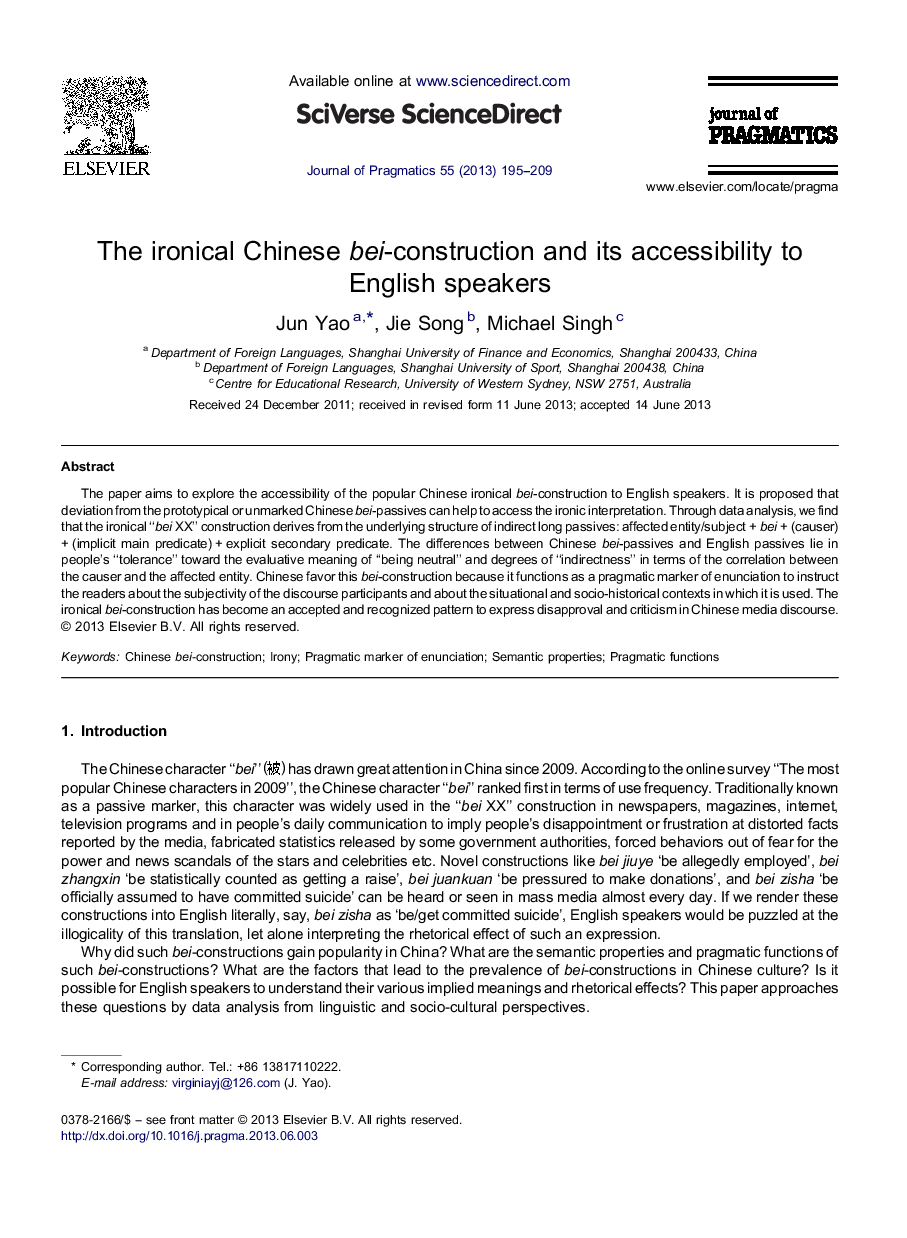| Article ID | Journal | Published Year | Pages | File Type |
|---|---|---|---|---|
| 7298138 | Journal of Pragmatics | 2013 | 15 Pages |
Abstract
The paper aims to explore the accessibility of the popular Chinese ironical bei-construction to English speakers. It is proposed that deviation from the prototypical or unmarked Chinese bei-passives can help to access the ironic interpretation. Through data analysis, we find that the ironical “bei XX” construction derives from the underlying structure of indirect long passives: affected entity/subject + bei + (causer) + (implicit main predicate) + explicit secondary predicate. The differences between Chinese bei-passives and English passives lie in people's “tolerance” toward the evaluative meaning of “being neutral” and degrees of “indirectness” in terms of the correlation between the causer and the affected entity. Chinese favor this bei-construction because it functions as a pragmatic marker of enunciation to instruct the readers about the subjectivity of the discourse participants and about the situational and socio-historical contexts in which it is used. The ironical bei-construction has become an accepted and recognized pattern to express disapproval and criticism in Chinese media discourse.
Keywords
Related Topics
Social Sciences and Humanities
Arts and Humanities
Language and Linguistics
Authors
Jun Yao, Jie Song, Michael Singh,
